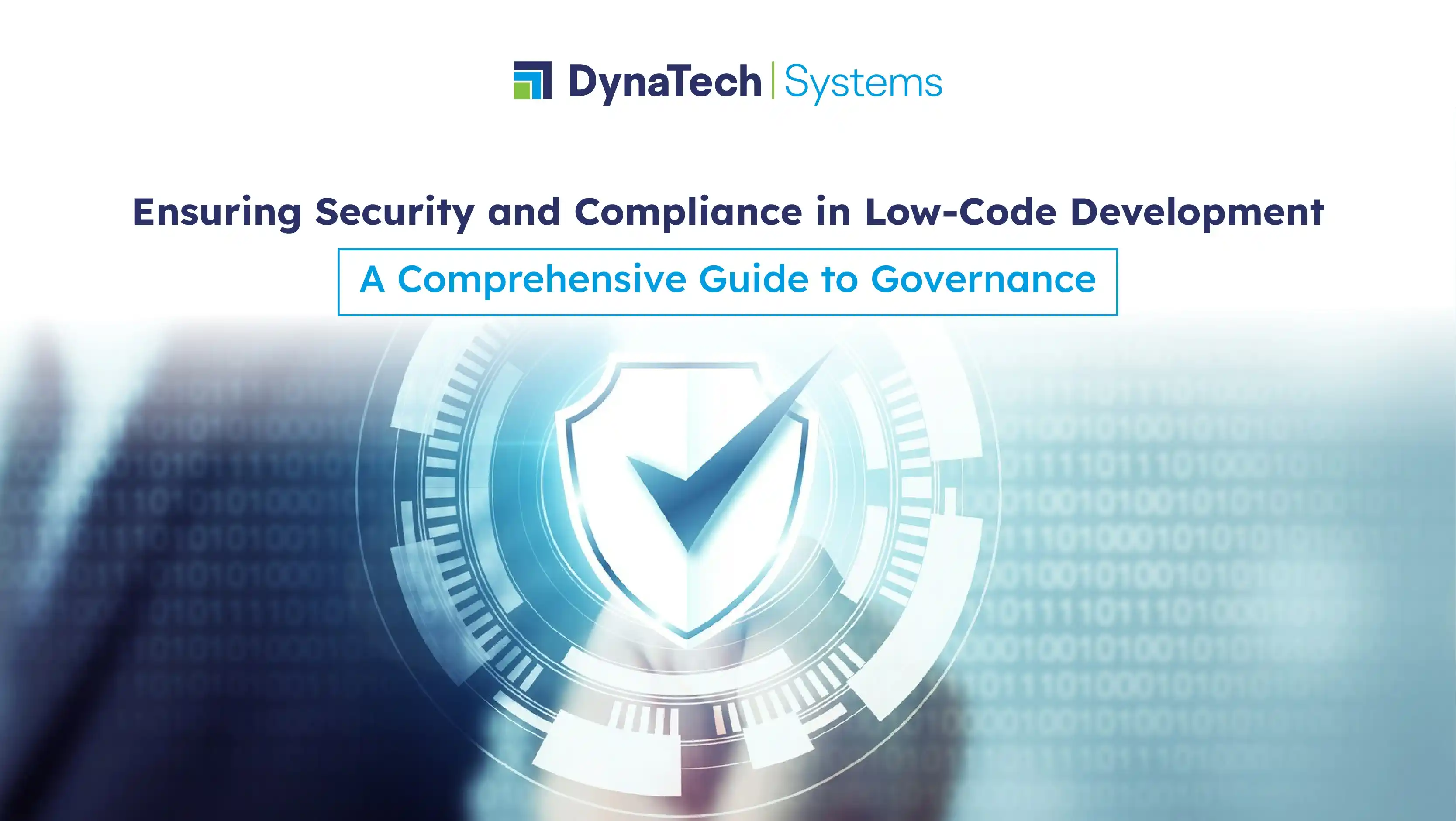Governance should be the top priority for any no-code or low-code deployment. With Power Platform, Microsoft makes it easier for businesses to achieve this by encouraging the development and strategy of managing an IT environment that includes citizen and professional developers.
In addition, a successful deployment requires a constant focus on security, monitoring, and managing the application lifecycle. Companies that have little control over apps made by their employees risk a lot, which is why governance should always be at the top of any business’s list of priorities.
What is low-code governance?
Low-code governance is essential throughout the software development lifecycle to maximize the platform’s value securely. A clear and business-value-aligned governance framework can ensure that citizen developers create apps that contribute to the bottom line.
Governance as well as controls are two crucial components for maintaining security of the low-code platforms as it allows this technology more accessible to the non-IT personnel. Enterprises require a low-code platform that delivers visibility, knowledge, and control over every step of the application development lifecycle because more people are producing apps, and more apps are being produced.
The future of Low-Code Governance
Let’s explore the necessity for an efficient low-code governance strategy.
Enhanced visibility at first sight
IT Admins will soon be able to acquire vital information through insight cards on the admin center homepage, in addition to the weekly digest that is now routinely available with Managed Environments. Insight cards will provide data on the leading creators, applications, and flows.
This includes information on the condition of applications and processes that may require maintenance or can be decommissioned if they haven’t been utilized in a while to maintain a high level of tenant cleanliness.
Microsoft is pleased to announce the availability of new licensing reports that will provide Microsoft Power Platform administrators with visibility into which environments may require license attention and which licenses are being utilized in Managed Environments. The organization is appropriately licensed to use the MS Power Platform would be ensured by IT admins.
Excellent leadership from the start
Microsoft Power Platform administrators can control the use of applications with app-sharing controls. To limit the number of users and security groups, solution flows will be set up within environments before apps are approved by IT or users receive specific training.
With Managed Environments, IT administrators can ensure that apps are developed correctly from the start by directing first-time developers to organization-specific material and rules through a customized onboarding experience within the product.
To confirm that applications are developed correctly before deployment to the production environment, IT administrators can use the solution checker tool, which will soon be included in Managed Environments. The solution checker tool can be customized with dozens of securities, performance, and reliability rules to alert when a solution violates the rules or prevent the import of violating solutions into a managed environment.
Simple lifecycle management
Implementing application lifecycle management (ALM) in a manner accessible to everyone might be one of the more challenging parts of application governance. IT loses visibility and control over applications when developers export and import solutions manually between development and production environments.
Some customers create an automated ALM process in their organization using pro-dev and IT-centric platforms such as Microsoft Azure DevOps and GitHub Actions; however, these tools are sophisticated and frequently require a DevOps team to drive deployment and manage the process.
Consequences of Ineffective Governance of Citizen-Developed Applications
– Shadow IT, or IT solutions installed by people outside the primary IT function, poses security problems. IT should be aware of what is being constructed and approve platforms citizen developers can construct. Microsoft’s Power Platform, for example, contains safeguards. Every no-code or low-code platform should prevent business users from developing insecure apps. Microsoft describes its approach in reviewing its policies and application lifecycle management documentation.
– Business-critical system connectors pose data security concerns as any program can access sensitive data within an organization, including customer and industry-protected data. IT should have visibility into the usage of such data, and organizations must know who is using each platform and how. Microsoft’s Power Platform offers role-based access control, data loss prevention, encryption, and exfiltration controls to enhance data security, and provides additional resources on security and governance.
– You could face fines and other legal consequences if data is not properly managed and doesn’t comply with GDPR and other privacy rules
– Without a Quality Assurance (QA) process in place, a minor error could rapidly grow into a breach with severe financial consequences.
– SLAs are essential for mission-critical systems, including those developed with low-code and no-code platforms.
– Application Lifecycle Management is a proactive strategy for monitoring an application throughout its lifetime. This may involve upgrades to guarantee that the application remains secure despite functional modifications or additions.
Conclusion
Low-code development is a fast and efficient way to build business applications with minimal coding effort. However, it also introduces unique security challenges that must be addressed. To ensure the success of low-code development projects, it’s crucial to follow governance best practices. This includes implementing clear roles and responsibilities, modifying management processes, and enforcing security policies and procedures to mitigate potential security risks and vulnerabilities.
Additionally, low-code security and governance with using Microsoft Dynamics 365 can help enhance various tools and technologies such as SAP and Salesforce Organizations can build secure and compliant applications that meet their business needs by adopting comprehensive low-code security and governance practices.




























